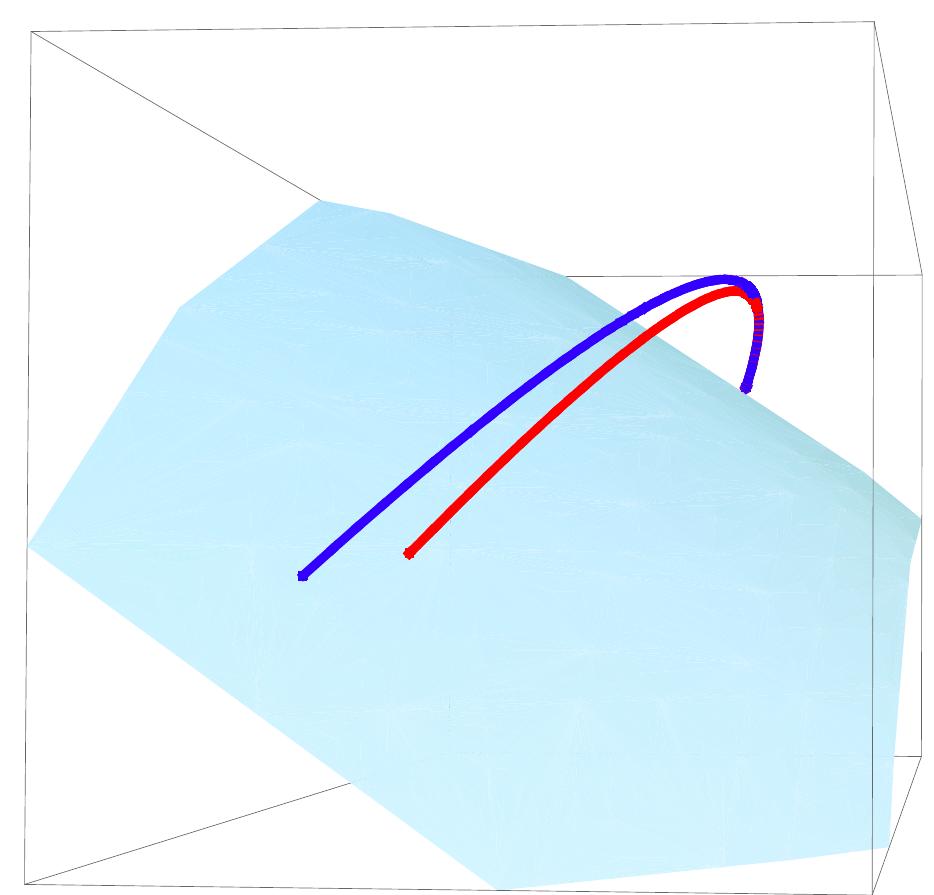Abstract
There is a growing consensus that physics majors need to learn computational skills, but many departments are still devoid of computation in their physics curriculum. Some departments may lack the resources or commitment to create a dedicated course or program in computational physics. One way around this difficulty is to include computation in a standard upper-level physics course. An intermediate classical mechanics course is particularly well suited for including computation. We discuss the ways we have used computation in our classical mechanics courses, focusing on how computational work can improve students' understanding of physics as well as their computational skills. We present examples of computational problems that serve these two purposes. In addition, we provide information about resources for instructors who would like to include computation in their courses.
References (23)
- * Electronic address: ttimberlake@berry.edu † URL: http://www.westga.edu/ ~jhasbun; Electronic ad- dress: jhasbun@westga.edu
- Diane Grayson,"Rethinking the Content of Physics Courses," Physics Today 59, No.2, 31-36 (2006).
- Robert G Fuller,"Numerical Computations in US under- graduate Physics Courses," Computing in Science & Eng. 8, No.5, 16-21 (2006).
- Rubin Landau, "Computational Physics: A Better Model for Physics Education?," Computing in Science & Eng. 8, No. 5, 22-30 (2006);
- Marty Johnston, "Implementing Curricular Change," Computing in Science & Eng. 8, No. 5, 32-37 (2006);
- Jaime R. Taylor and B. Alex King III, "Using Computational Methods to Reinvigorate an Un- dergraduate Physics Curriculum," Computing in Science & Eng. 8, No. 5, 38-43 (2006);
- David M. Cook, Compu- tation in the Lawrence Physics Curriculum (Department of Physics, Lawrence University, Appleton, WI, 2006);
- H. Gould, "Computational physics and the undergradu- ate curriculum," Computer Physics Communications 127, 6-10 (2000).
- Harvey Gould, Jan Tobochnik, and Wolfgang Christian,An Introduction to Computer Simulation Methods: Appli- cations to physical systems (Addison-Wesley, New York, NY, 2007),3rd. ed.; Rubin H. Landau and Manuel J. Paez,Computational Physics: problem solving with com- puters (John Wiley& Sons, New York, NY, 1997).; Steven E. Kunin and Dawn C. Meredith,Computational Physics: Fortran Version(Addison-Wesley, Reading MA, 1990);
- Samuel S. M. Wong,Computational Methods in Physics & Engineering (Prentice Hall, Englewood Clifts, NJ, 1992);
- Alejandro L. Garcia,Numerical Methods for Physics (Pren- tice Hall, Upper Saddle River, NJ, 2000), 2nd. ed.; Nicholas J. Giordano and Hisao Nakanishi,Computational Physics (Pearson, Prentice Hall, Upper Saddle River, NJ, 2006), 2nd. ed.; Paul L. DeVries,A First Course in Computational Physics (John Wiley, New York, NY, 1994);
- David M. Cook,Computation and Problem Solving in Undergraduate Physics & Engineering (Department of Physics, Lawrence University, Appleton, WI, 2003).
- Kelly R. Roos,"An Incremental Approach to Computa- tional Physics Education," Computing in Science & Eng. 8, No.5, 44-50 (2006).
- Norman Chonacky and David Winch, "3Ms For Instruc- tion: Reviews of Maple, Mathematica, and Matlab," Com- puting in Science & Eng. 7, No. 3, 7-13 (2005);
- Norman Chonacky and David Winch, "3Ms For Instruction, Part 2: Maple, Mathematica, and Matlab," Computing in Science & Eng. 7, No. 4, 14-23 (2005).
- See www.opensourcephysics.org as well as the OSP user's guide: Wolfgang Christian,Open Source Physics: A user's guide with examples (Pearson, Addison-Wesley, San Fran- cisco, CA, 2007).
- Wolfgang Christian, Mario Belloni, and Douglas Brown, "An Open-Source XML Framework for Authoring Curricu- lar Material," Computing in Science & Eng. 8, No.5, 51-58 (2006).
- Alan Cromer,"Stable Solutions Using the Euler Approxi- mation," Am. J Phys. 45, 455-459 (1981).
- John R. Taylor, Classical Mechanics (University Science Books, Saualito, CA 2005);
- Stephen T. Thornton and Jerry B. Marion,Classical Dynamics of Particles and Sys- tems (Thomson-Brooks/Cole, Belmont, CA 2004), 5th ed.; Grant R. Fowles and George L. Cassidy,Analytical Me- chanics (Thomson-Brooks/Cole, Belmont, CA 2005), 7th ed.
- Javier E. Hasbun,Classical Mechanics with MATLAB Ap- plications (Jones & Bartlett, Sudbury, MA 2008), see also www.jbpub.com/catalog/0763746363/.
- Todd Timberlake, "A computational approach to teaching conservative chaos," Am J. Phys. 72, 1002-1007 (2004).
- The matlab code used is available upon request by e- mailing the author. OSP applications not included in Ref. 13 will be made freely available here: www.westga.edu/ ~jhasbun/osp/osp.htm in tandem with the textbook re- lease.
 Todd Timberlake
Todd Timberlake


